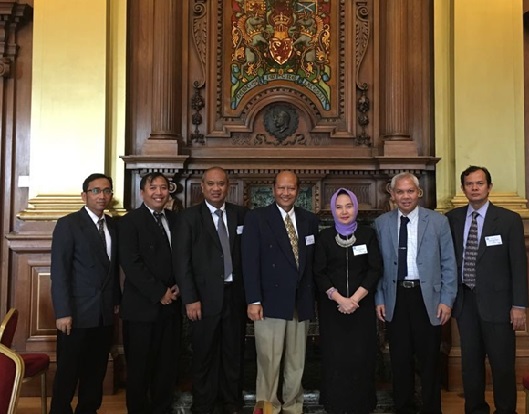
Researchers from UGM attended the ISO TC-292 meeting in Edinburgh, Scotland from 5-9 September 2016; they are Prof. Dwikorita Karnawati, Teuku Faisal Fathani, and Wahyu Wilopo. Other participants are Lilik Kurniawan (Director of Disaster Risk Reduction in the National Disaster Mitigation Agency/BNPB), Firza Gozalba (BNPB), and I Nyoman Supriatna (Head of Standarisation of National Standard Agency). As many as 43 countries joined the event and 14 other countries as observers.
In a press release sent out on Wednesday (7/9) Wahyu Wilopo said in the ISO-TC292 participants submitted the ISO to be a guidelines for communities and shareholders around the world to improve preparedness and mitigation as well as response for disasters.
Wahyu explained land movement is well spread around the world, including Indonesia. The BNPB in 2016 said there were as many as 40 millions of population are prone to land movement risks. So, mitigation needs to be taken to avoid casualties. It can be done structurally or non-structurally.
“In the implementation, disaster risk reduction is effective to be done through non-structural mitigation,” he said. The non-structural mitigation can be done by improving community preparedness through application of early warning systems, which is in line with the Sendai Framework for Disaster Risk Reduction 2015-2030.
During the 2nd Plenary Meeting of ISO/TC 292 in Bali in December 2015, Indonesia proposed the early warning systems for land movement or Security and Resilience–Community-Based Landslide Early Warning System, to have an ISO international standard. This was responded positively on 10 June 2016. Since then, Indonesia has actively participated in the process for ISO drafting.

